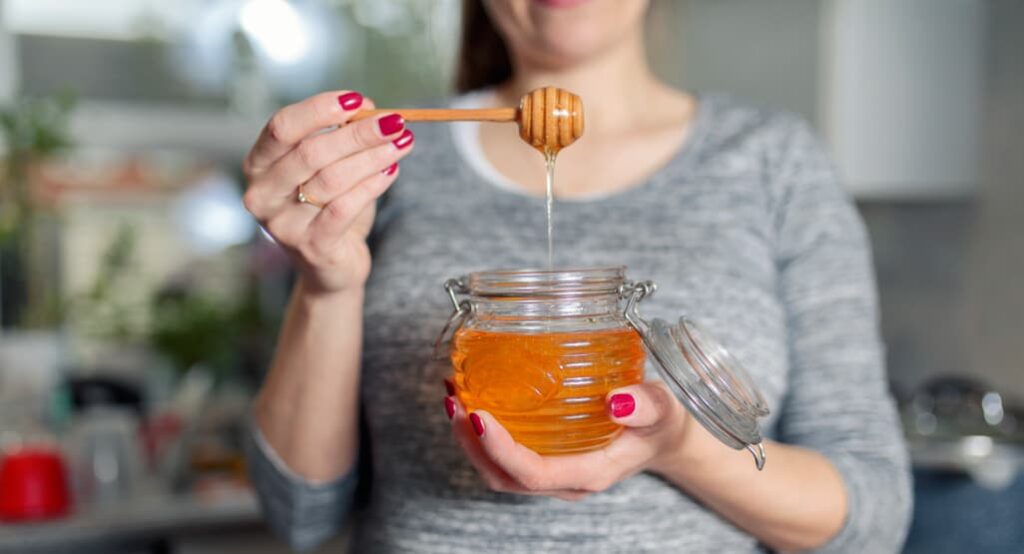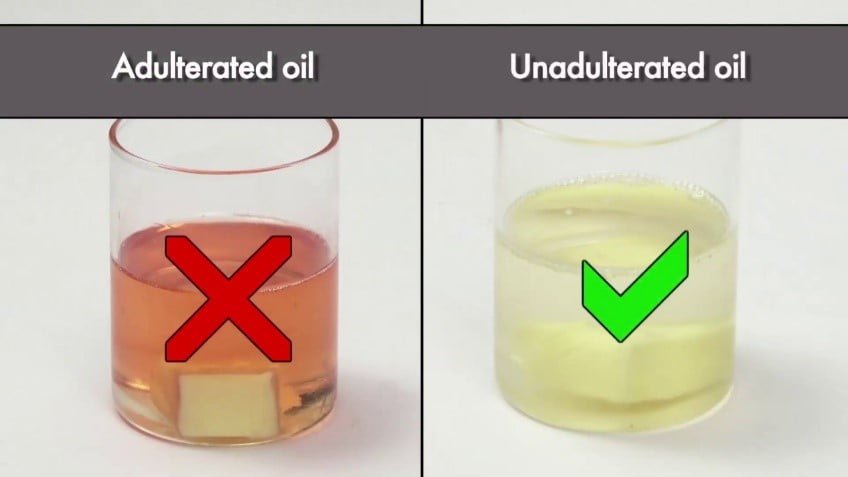by Priyanka Kataria

Food Fraud
Food fraud is commonly described as any suspected intentional action committed when a food business operator intentionally decides to deceive customers about the quality and/or content of the food they are purchasing in order to gain undue advantage, usually economic, for themselves. While food fraud is often motivated by profit, some forms of food fraud can also pose a direct threat to the health of consumers and customers. There are different kinds of food fraud, that can decrease the trust and confidence of consumers in different food products. Besides adulteration, the food industry also faces misleading claims on labels, untrue brand narratives, unlawful food processing, fudged certification, unchecked food hoarding and wastage. Wilful dishonesty in food production or supply that may be detrimental to consumers or overall public interest is not only a food fraud but also a crime. Successful food fraud can also make it more likely that fraudsters to take further risks with food, thereby placing the safety and integrity of food supply chains in danger. The various food items which are highly susceptible to food fraud involve oils, milk, meat products, infant formula, honey, juices, spices, etc making milk the second most commonly adulterated food ingredient after olive oil and honey
There are many stringent food regulations framed by many countries, that may prevent the domestic market from operating as intended and may also pose a risk to human, animal, or plant health, animal welfare, or the environment in the case of GMOs and plant pesticides.
Types of Food Fraud
Food Adulteration in India
Adulteration in food items becomes more rampant during Indian festivals, owing to a steep rise in demand. Unfortunately, the common man is unaware of the adulterants.
According to the Prevention of Food Adulteration Act, any food that contains additives that are not permitted is considered to be adulterated. If the permissible limit exceeds, then also the food is considered adulterated. The nature and quantity of the additives should be printed on the label of the container. ‘Artificially coloured’ must be written on the label if any colouring material has been added. Mixing, substitution, concealing the quality, putting up decomposed food for sale, misbranding or giving false labels and addition of toxic—all these come under adulteration.
The Food Safety and Standards Association of India (FSSAI) is the body responsible for protecting and promoting public health through regulation and supervision of food safety by testing various foods and finding any adulteration in milk, ghee, edible oils, pulses, and minerals water.
The Centre for Science and Environment( CSE), a Delhi-based non-profit organisation alleged that there has been no strong, public action taken from the Food Safety and Standards Authority of India following many investigative reports on adulterated honey in Indian markets. In December 2020, CSE collected 22 honey samples from 13 Indian manufacturers and tested them at labs in the country and in Germany. Only three brands passed all the tests and 17 of the samples were found to be impure.
The apex court’s directive to the Centre had come in a 2012 PIL that sought exemplary punishment for those adulterating milk as it is the only source of nourishment for infants and a major part of the diet for growing children, which was being adulterated with chemicals like baking soda. According to the report, the worst performers were Bihar, Chhattisgarh, Odisha, Bengal, Mizoram, Jharkhand and Daman and Diu, where adulteration in milk was found to be up to 100%. It was being adulterated with urea crossing the permissible limit—700ppm. Milk was also being made with urea and detergent.
Rice is being adulterated with small grains of stones to increase its weight. mustard oil is mixed with crude rice bran oil, and spices such as turmeric powder with metanil yellow, which is purely carcinogenic. Also, low-quality khesari dal is added to arhar dal, resulting in paralysis of the lower body.
Common food adulterants in India





Not only these, soya chunks are also prepared using flour and ammonium bicarbonate (a levelling agent) that makes the dough light and airy besides, chilli powder is laced with non-edible aniline dyes. The innocuous ketchup used in noodles, rolls and fast food are prepared using cheap red, orange and green colours along with a mixture of pumpkin, potato and tomato paste which are easily available in the market and commonly used by street food vendors.
Effects of eating adulterated food
The consumption of adulterated foods has long-term effects including food poisoning (diarrhoea), dehydration, liver and kidney failure, and cancer.
Current Scenario
India is facing a food fraud problem with about ten states unable to ensure food safety and 15% of food samples failing to pass quality tests due to lack of workforce and adequate food testing laboratories.
According to a research report by UP-based Harcourt Butler Technical University (HBTU) stated that in Kanpur (the biggest markets for edible oil), about 70% of the mustard oil from more than 120 samples of big oil companies in the markets are found to be adulterated which is actually a danger sign.
Status of Counterfeiting in India
In the recent report of Authentication Solution Provider’s Association (ASPA) State of Counterfeiting in India 2020 report, overall counterfeit incidents in India rose by 24% year-on-year between 2018 and 2019, especially the three analysed sectors covering food and beverage items. FMCG, Alcohol and Agriculture took the second, third and sixth spots in terms of counterfeiting. India is losing over Rs 1 lakh crore per annum due to the sale/purchase of counterfeit goods by consumers across all sectors. Counterfeiting corrupts an economy by harming consumer rights, damaging brand equity, causing losses to industries and causing loss of government revenues.
The most counterfeited food items in India are cumin seeds, mustard cooking oil, ghee and illegally produced liquor. As the sales of loose oil is officially banned but still there is an alarming need of a stringent law to be implemented. Consumer ministry has asked he states to ensure prevention of reuse of tin and plastic containers foe edible oils and fats and should opt packaged pol as traceability can be ensured by labels having name and other details of the manufacturer.
Need of traceability
The state government should upgrade the traceability and protection of alcoholic products, as of now 22 local State Excise Departments use Tax stamps to prevent illicit liquor and smuggling which should be enhanced with new generation digital traceability solutions providing real time data intelligence to make the system more robust. According to the International Tax Stamp Association, tax stamps on the bottle opening acts as an anti-tampering seal depicts that payment is made to a recognized government authority for the product and guarantee that the product is genuine.
Action to be taken
“The change in adulteration laws is the need of the hour. Recommendations have been made, but the government hasn’t done anything. We all are aware of the rampant adulteration in food, but lack of proper punishment and fines had not helped our investigating agencies,” said Ashok Kanchan, Chief Advisor, Food Nutrition and Health Consumer Voice.
The panel, headed by former Supreme Court judge, Justice B S Chauhan, wants Section 272, 273 and 357 of the IPC to be amended so that courts can order compensation for victims and should be punished by life imprisonment. Only West Bengal, Odisha and Uttar Pradesh have amended their IPC provisions 272 and 273 to award life term for milk adulteration.
States with highest counterfeit incidents
Uttar Pradesh, Bihar and Rajasthan have the highest crime rates in India due to close proximity to country border lines with Pakistan, Nepal, Bangladesh & Myanmar and percentage of rural population (approx. 75+%) have also the most counterfeit incidents. As the gap between a huge demand for branded products, lack of distribution channels and lack of awareness has led to the growth of fake FMCG brands in these areas and also F&B items like liquor and agricultural products.
Profits First, Health Second
The trade of spurious food is booming and food adulterators make a profit of 200 per cent (pc) through the illegal trade as cost of production is cheap.
For example, production cost of a kg of refined honey is Rs 200 but that of adulterated honey is only Rs 40 which though sells for Rs 140 per kg in the market, says a report by Commissionerate Police. Whereas pure honey costs Rs 300 a kg and has a profit margin of 15 pc, sale of spurious honey brings 100 pc profit.
Similarly, adulteration of clarified butter or ghee is equally profitable with the unscrupulous elements earning 40 pc profit from the business. Production of ghee costs Rs 300 per kg and a kg of the spurious stock can be prepared with just Rs 80. Pure ghee is available in the market between Rs 350 and Rs 500, the spurious counterpart is available at Rs 150 per kg.
Conclusion
These all can be combatted by three essential elements of Awareness, Identification and Enforcement and participation. Adopting technology (authentication & traceability solutions) is the first and most important preventive step. The Government and brand owners should communicate to consumers about authentication features on their product’s and verify those features.
Notorious food incidents happened in India